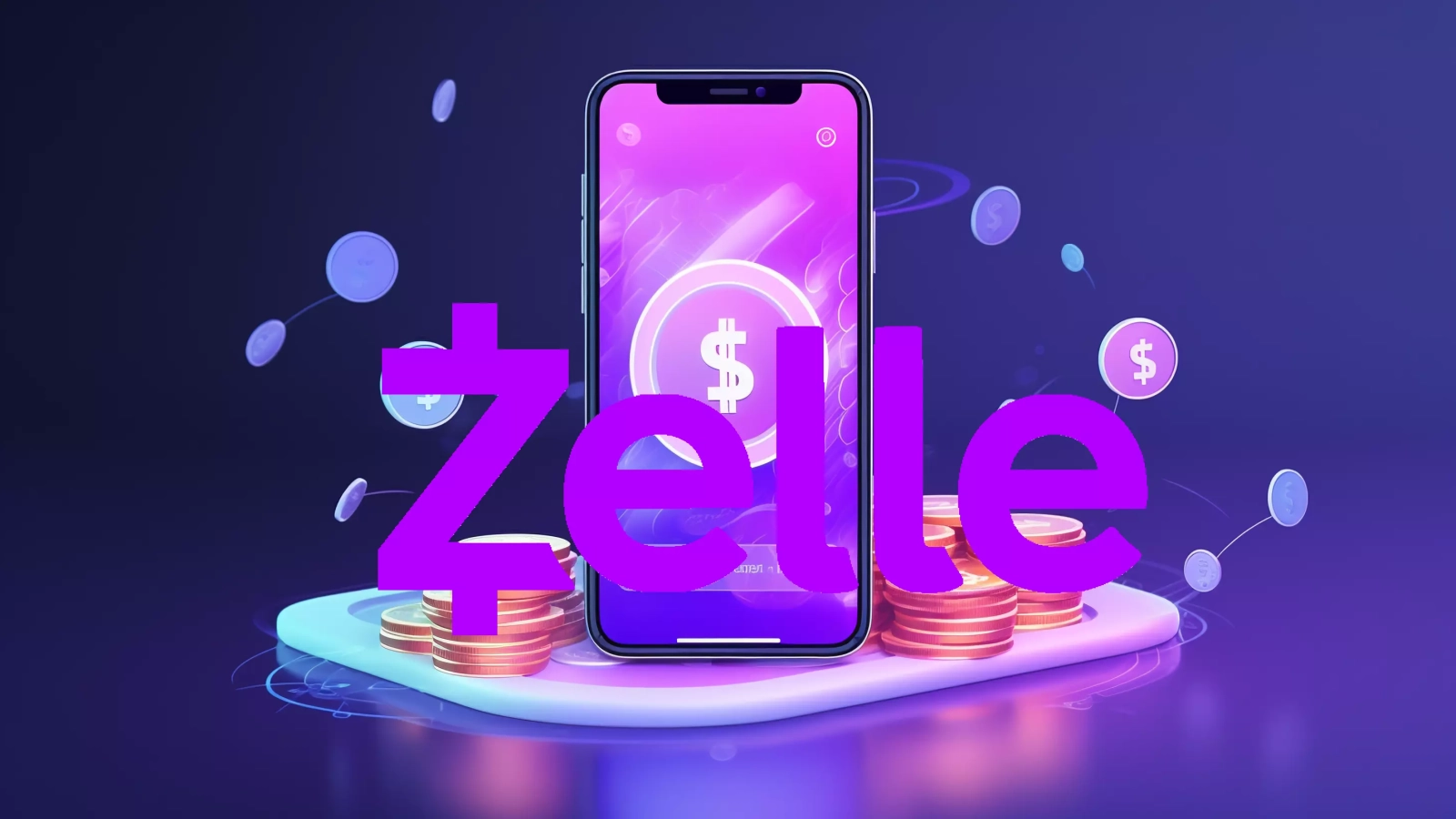ADVERTISEMENT
The digital banking era has brought convenience and efficiency. However, it also comes with potential risks, including scams and fraud. One such area of concern is cybercrime. This form of crime is growing globally, and no platform is fully immune.

This includes Zelle, a popular money transfer app. There's been an uptick in scams linked to Zelle business accounts. Hence, it's crucial for individuals and businesses to stay watchful and ensure the safety of their transactions.
This article will delve into common Zelle business account scams and provide practical tips to avoid falling victim. A little understanding of how Zelle works can go a long way to save you from significant losses and unnecessary inconvenience.
Launched in 2017, Zelle is a widely-used digital payment network owned by Early Warning Services, a private corporation owned by several large banks, including Capital One, BB&T, Bank of America, JPMorgan Chase, PNC Bank, US Bank, SunTrust, and Wells Fargo.
Zelle offers a convenient and quick way for users to send and receive money directly between almost any U.S. bank accounts typically within minutes. All they need is the recipient's email address or U.S. mobile phone number.
It's integrated into the existing apps of participating banks and credit unions, which means users do not need to download a separate app. For those whose bank or credit union isn’t a partner with Zelle, a stand-alone Zelle app can be downloaded and linked to a Visa or Mastercard debit card.
One of the appealing things about Zelle is there's no fee to send or receive money. This factor, coupled with its speed of transactions, has made it appealing to a large number of businesses and customers alike. It allows businesses to receive payments instantly and disburse fund to employees or vendors swiftly.
However, while this convenience is undeniably an asset, it's unfortunately also made Zelle attractive to scammers, causing business users and individuals to exercise caution.
Zelle operates by linking with bank accounts and facilitating direct transfers between them. The service is embedded within the websites and apps of its participating banks and credit unions. This means that users can access Zelle through their bank's mobile or online banking interface.
To start using Zelle, you first need to enroll, either through your bank's app or the stand-alone Zelle app. Enrollment involves providing basic personal details such as your name, email address, and the U.S. mobile number that you'll use for transactions.
Once enrolled, sending money with Zelle is as easy as selecting a recipient from your contacts or entering their email address or phone number. The money is then transferred directly to their bank account once they accept the payment. If they’re already a Zelle user, the process is instant. If they’re not, they will receive a notification prompting them to sign up.
It’s important to note that while Zelle transaction requests are instant, the money itself might not appear in the recipient's bank account immediately. This largely depends on the recipient's bank and whether it’s a weekday or weekend.
While Zelle's main strength is its instantaneous nature, this, combined with the irrevocability of transactions once initiated, has unfortunately been exploited by fraudsters, thereby necessitating extra precautionary measures to avoid scams.
1. Phishing Scams: These occur when a scammer posing as Zelle or your bank tricks you into providing your account login details, usually through a misleading email or text message. They then use this information to log into your account and make unauthorized transactions.
2. Business Email Compromise (BEC): BEC scams happen when a scammer impersonates company executives or vendors. They may email you asking for payments to be made to a particular Zelle account that is actually under their control.
3. Overpayment Scams: In overpayment scams, a scammer overpays for a product or service using a fraudulent check. Then, they ask you to refund the extra amount through Zelle. When the original check bounces, you are left with a financial loss.
4. Invoice Scams: Invoice scams involve a fraudster posing as a legitimate vendor and sending you a fake invoice, usually with their Zelle account details. If you pay without verifying, you end up losing money to an imposter.
5. Money Mule Scams: Some unfortunate individuals may unwittingly become part of a fraudster's operations, particularly in money-mule scams. The scammer transfers money, often fraudulently obtained, to a person's account and asks them to forward it via Zelle. This is done under various pretexts, such as testing the Zelle service.
6. Customer Support Scams: Be cautious of scammers posing as Zelle customer service representatives. They may trick you into providing your login information, allowing them access to your account.
1. Protect Your Information: Never share confidential information like passwords, pin codes, or account numbers, even if the requester appears to be Zelle or your bank.
2. Stay Cautious: Limit transactions to trusted and known contacts. Be wary of strangers who insist on transacting via Zelle.
3. Confirm Details: Ensure you're sending money to the right person. Double-check each detail before finalizing a transaction as transactions via Zelle are typically instantaneous and cannot be reversed.
4. Be Aware of Email and Text Scams: Fraudsters may send messages claiming to be from Zelle or your bank. Stay alert and always verify the source independently.
5. Set Transaction Limits: Maintain a limit on transactions to reduce your potential loss in the event of a scam.
6. Use Strong Authentication Procedures: Use two-factor verification to secure your account. Strong, unique passwords and security questions can also help guard against unauthorized access.
7. Verify Payment Changes: If a vendor or client suddenly asks you to switch to Zelle for payments, verify this request independently to ensure it's legitimate.
8. Keep Software and Apps Updated: Regularly updating your apps and software can provide extra security layers, as updates often contain security patches.
9. Monitor Your Accounts: Regularly review your transactions and keep an eye on your account activity. If you notice anything suspicious, report it immediately to your bank.
Yes, you can use Zelle to transfer money to a Chime account. It's as simple as inputting the recipient's email address or phone number used for their Chime account. However, if the recipient is not already enrolled with Zelle, they have to accept the payment through Zelle accept payment feature for the transaction to go through.
Yes, Zelle is safe for financial transactions. It uses encryption to protect personal data and transactions. The possibility of scams exists, as with any financial transaction platform, but technologies are in place to help safeguard users. However, one must be cautious about sharing sensitive information and confirm details before making any transactions.
Receiving money with Zelle is relatively straightforward. If you're already enrolled with Zelle, the money sent to you will directly go to your bank account. If you're not, you will receive a message or email notifying you. To get the money, you'll need to enroll an eligible Visa or Mastercard debit card or a U.S. bank account with Zelle.
Zelle's transfer limit varies depending on the bank you use. Some banks allow transfers up to $1,000 per day, while others allow up to $2,500 or more. Be sure to check with your specific bank for its daily transaction limit policy with Zelle.
Zelle is a free service for consumers. However, some banks may charge a fee for transferring money using Zelle.
Yes, if your bank doesn't offer Zelle, you can download the Zelle app and enroll with a Visa® or Mastercard® debit card linked to a U.S. checking account.
Transfers with Zelle are typically instant if the recipient is already enrolled. If they're not, it can take 1 to 3 business days after they enroll.
This varies from bank to bank. Your bank can provide a specific answer based on their policies and limits.
Once a payment is sent through Zelle, it cannot be canceled unless it is a pending payment. If the recipient has already enrolled with Zelle, the money goes directly into their bank account.
No, Zelle does not support international transactions. It only supports money transfers between U.S. bank accounts.
Digital platforms like Zelle are transforming the way we conduct business transactions, offering unparalleled convenience and speed. However, this comfort shouldn't make us complacent about the risks involved, especially those regarding potential scams.
Being aware of the common types of business account scams on Zelle and knowing how to avoid them can provide significant protection against fraudsters. Keep in mind that maintaining secure practices like verifying payment requests, refraining from sharing sensitive account information, and regularly monitoring your account activity are some crucial steps in steering clear of scams.
Remember, your first line of defense against any scam is always vigilance and informed caution. Embrace the digital revolution in banking, but always stay one step ahead of potential fraud. Stay safe, and make the most of what Zelle has to offer for your business!


















